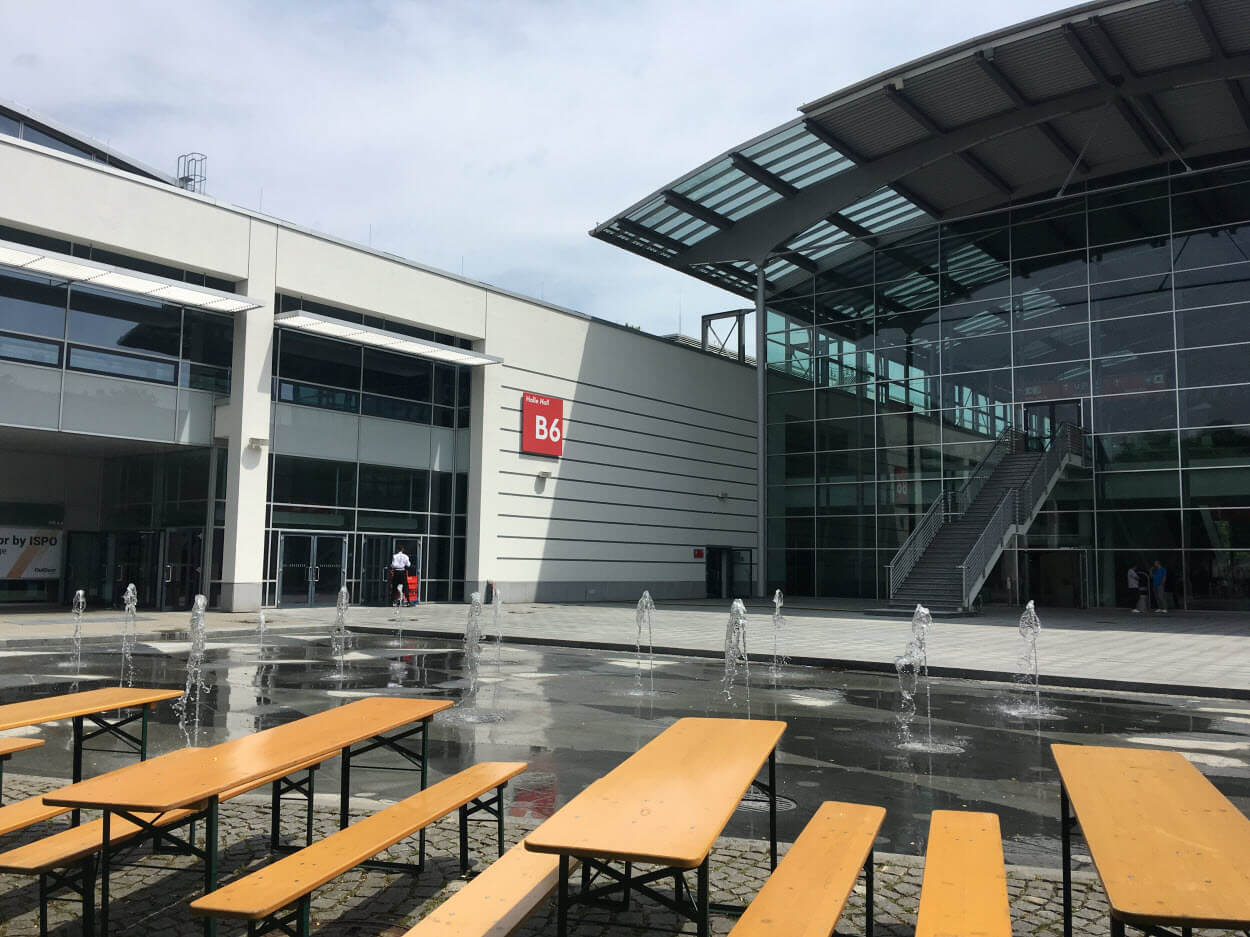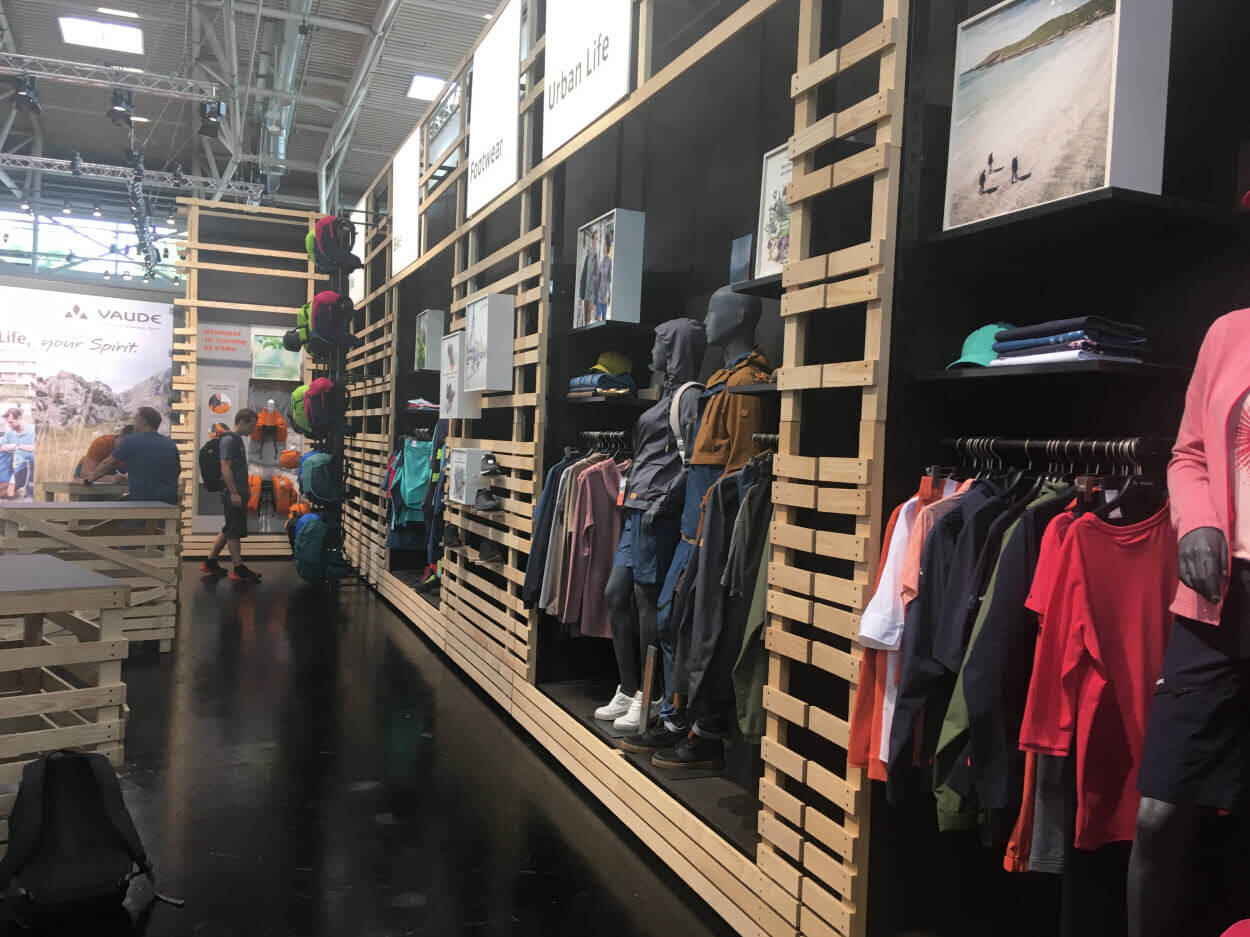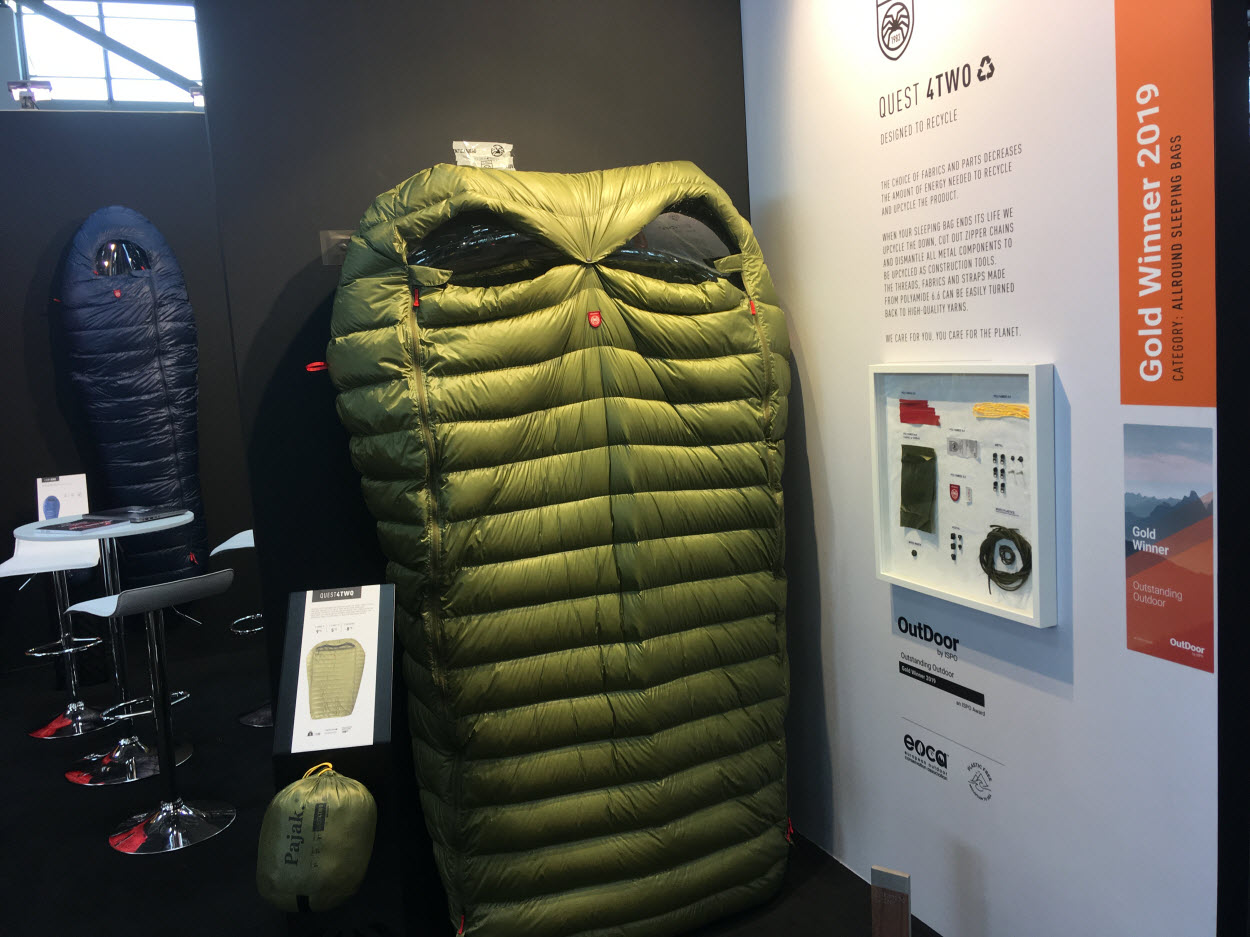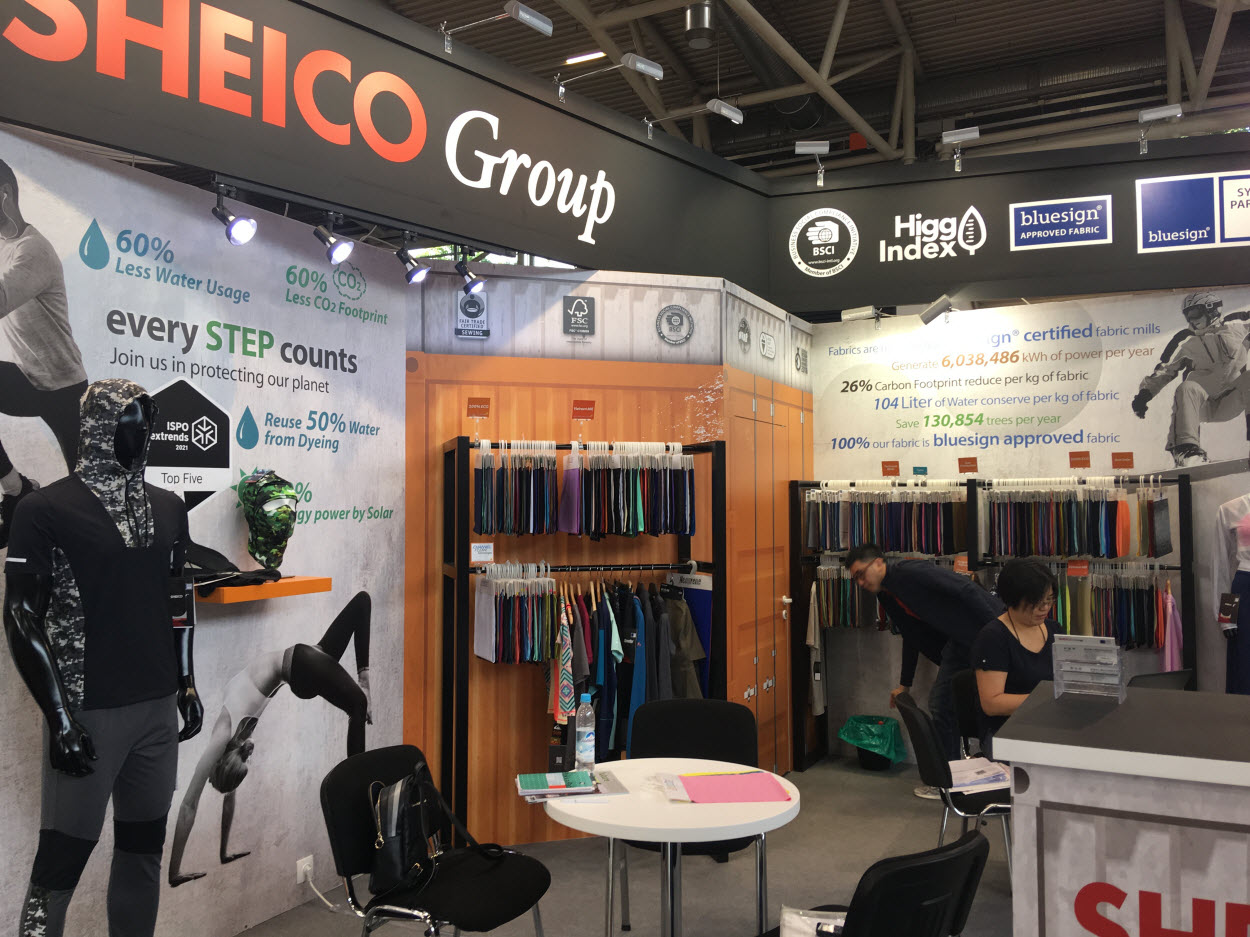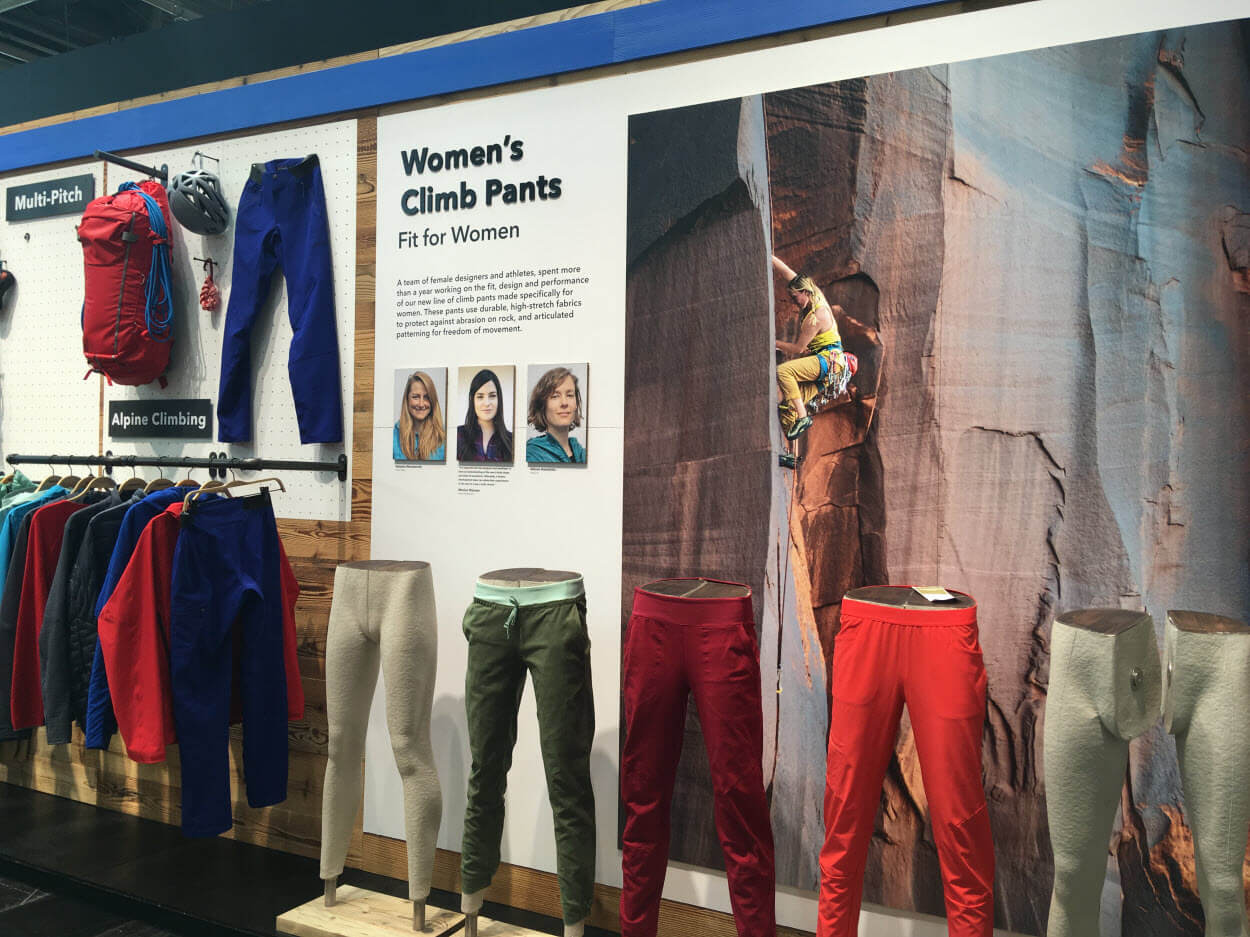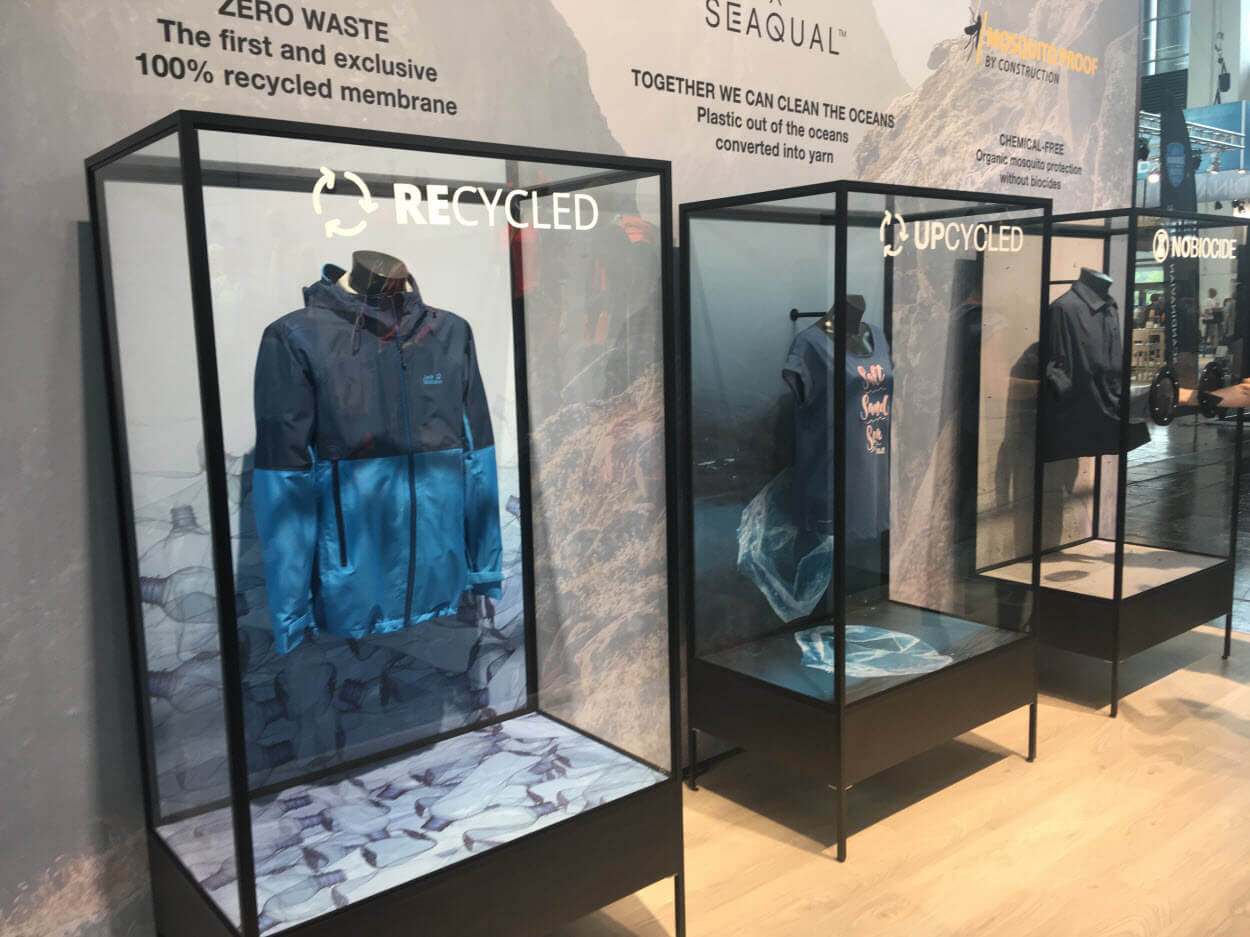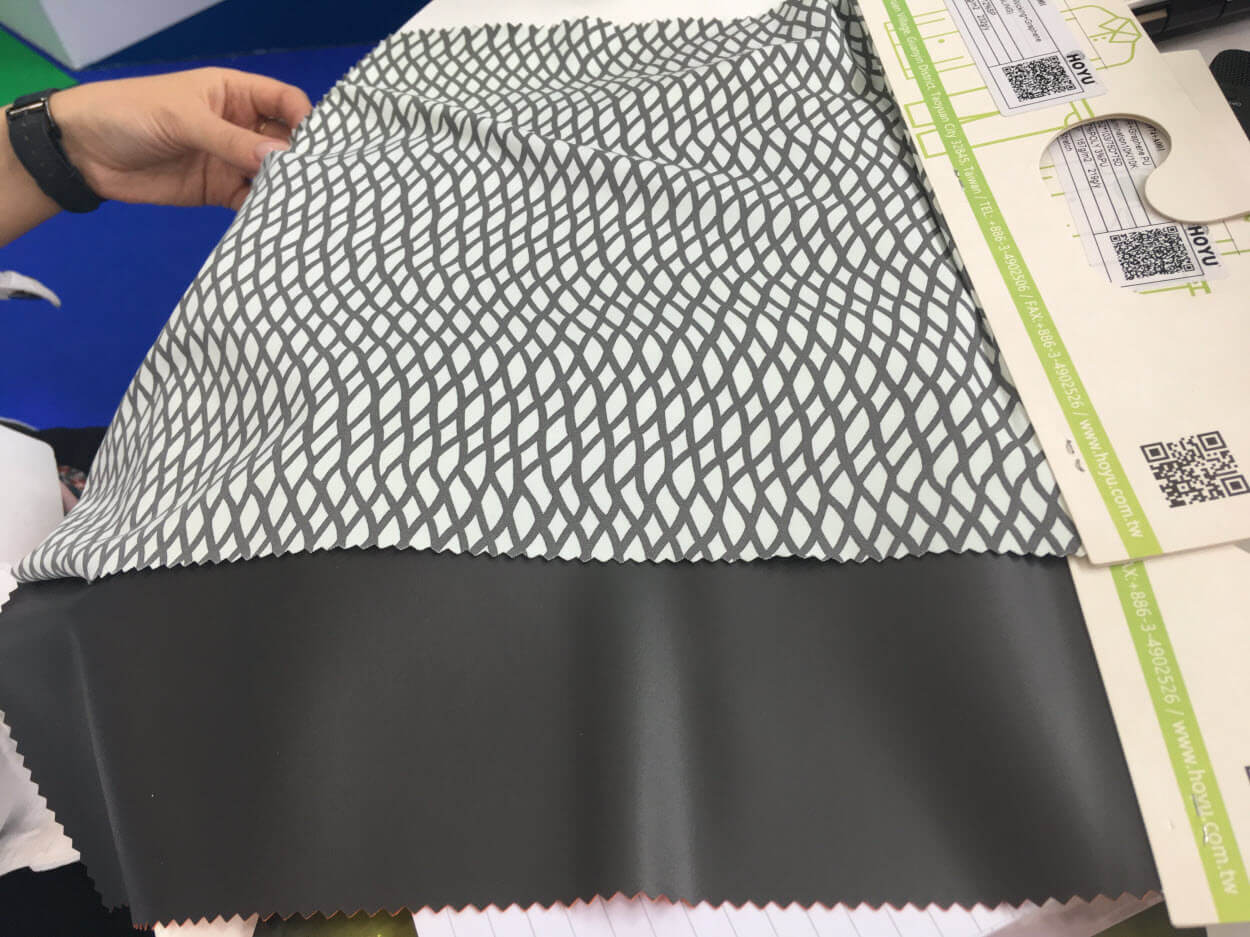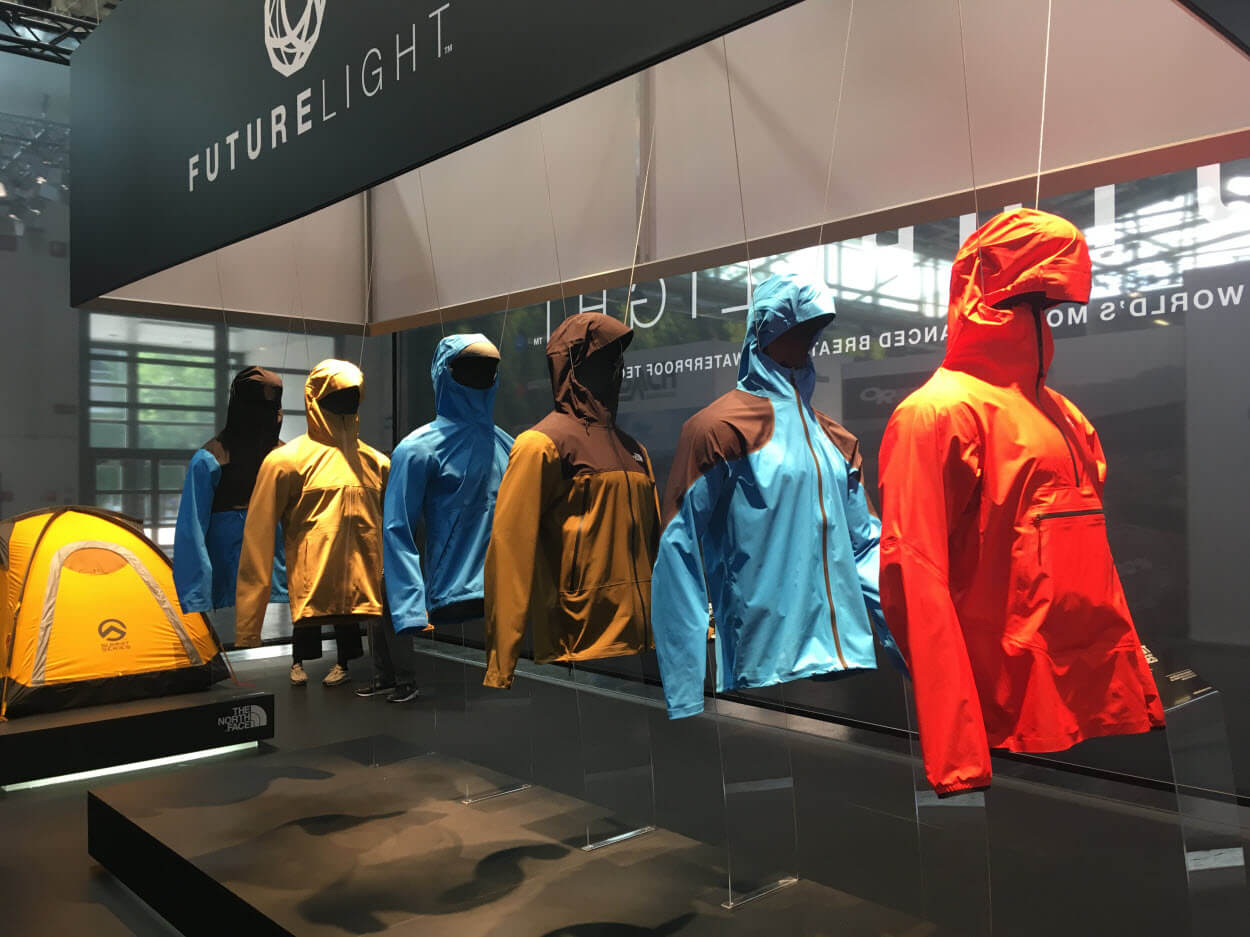
Last week, WTiN attended OutDoor by ISPO, which was held in Munich, Germany, for the first time. Jessica Owen reports on the latest and most interesting developments.
Having relocated from Friedrichshafen on the shore of Lake Constance to the historical Bavarian capital, the latest session of OutDoor by ISPO has now come to an end in Munich, Germany.
From 30 June to 3 July, 1,018 exhibitors showed off their product developments at Europe’s largest outdoor trade fair. Despite the move having created a somewhat quiet atmosphere, Messe München opened its doors to around 22,000 visitors from 90 countries.
“The industry’s tremendous enthusiasm demonstrates the success of our new concept,” says Klaus Dittrich, chairman and CEO of Messe München. “We were able to keep and even exceed our promises from the run-up.
“Together with the industry, we have launched a new era in which the term ‘outdoor’ is no longer forced to conform to a definition written by the industry. Instead, it has become the collective term for the attitude of each individual.”
Passion for the environment
Unsurprisingly, sustainability was the overriding talking point of the event.
Although this is a huge concern for most people in this day and age, those involved in the outdoor and sportswear industry appear to be more passionate about this topic, probably because they are more invested and have a deeper connection with the environment.
Among the many innovations in this area, Vaude exhibited its latest environmentally-friendly collections, such as the Urban Life Redmont Series made with GOTS-certified cotton, “which means the entire supply chain is certified”, says Mato Novogradec, product manager of apparel and urban life at Vaude.
Additionally, Vaude’s Croz Fleece Jacket has been designed to minimise the impact of microplastics by incorporating fleece material made from biodegradable wood fibre, and the brand is working together with Archroma Earth Colours to dye its products.
“Archroma produces dyestuff from waste. For example, in the cosmetics industry, orange peels and almond shells are often thrown away and now they are being used to create natural dyes,” adds Novogradec.
Elsewhere, other companies are beginning to consider making products that are 100% recyclable. For example, the Nordic outdoor brand Halti exhibited its Halti Hiker Next Generation Jacket, which was awarded winner of the OutDoor Lifestyle Apparel category this year. The design is made from 50% polyester and 50% recycled polyester and also features a fully recyclable polyester membrane and has a fluorocarbon-free treatment.
From jackets to sleeping bags, the Polish family-owned brand Pajak exhibited its fully recyclable Quest 4Two design, which received the Gold Winner award in the Allround Sleeping Bag category at OutDoor by ISPO. The choice of fabrics and parts used decreases the amount of energy needed to recycle and upcycle the product.
“What we’ve done is unify the plastics in the sleeping bag,” says Wojciech Kłapcia, research and development at Pajak. “The outside is made from polyamide 6.6 and so is the inside, the label, the cord and the zip straps.
“We have found a company that will melt down this plastic to make brick layer tool handles,” he adds. “The metal components are sold for scrap and the down can be sucked out and reused, too. Once the sleeping bag has been dismantled, it can also be melted down to make a very fine new yarn.”
Just across the border in Germany, the company Palgero has created both leisure and activewear T-shirts made from SeaCell fibre. The SeaCell fibre is a Modal fibre made of beechwood cellulose, which is enriched with algae from Icelandic fjords.
Raoul Ferenschild from Rafertrading, who was with Palgero at the show, says: “We also won the Gold Winner award for our Palgero merino/SeaCell long sleeve base layer. It has an unbelievable touch, very durable and low pilling.
“Palgero products are 100% ecological and made in Europe as well – 65% in Germany, 25% in Slovakia and 10% in Austria.”
In terms of sustainable material innovation, the water sports manufacturer Sheico Group exhibited its Spanflex fabric brand at the event. Spanflex is an extended family of performance knit fabrics designed for applications in running, yoga and cycling.
Jim Shiue, director of sales at Sheico Group, says: “We are the first manufacturer of recycled spandex. This is a pre-consumer recycling technology, so we take manufacturing waste from ourselves and other manufacturers, re-polymerise and re-spin this and turn it into new spandex.”
While on the subject of sustainability, several brands spoke of their PFC-free developments.
Perfluorinated compounds (PFCs), or more commonly referred to now as per- and polyfluoroalkyl substances (PFASs), are often used in the textile industry as these chemicals can add water and oil repellent properties to a garment. However, PFASs are both environmentally and physiologically hazardous.
As previously mentioned, Halti has used a fluorocarbon-free treatment on its recyclable jacket and Vaude has also not used these chemicals for the last year since it joined Greenpeace’s Detox campaign. Schoeller also now uses PFC-free solutions provided by its ecorepel bio technology.
Anti-insect and odour solutions
Another interesting theme that was prevalent at OutDoor by ISPO this year was insect repellence.
The best example of effective insect repellence comes from a relatively new Portuguese company called Repeltec. The company does not use permethrin, but uses a solution known as IR3535, which breaks down in the environment within 21 days.
“The technology has a halo effect, so insects are less likely to land, and if they do land then it messes with their nervous system,” explains Tom Sam, founding partner and CEO of Repeltec.
José Teixeira, head of Repeltec labs, adds: “It is completely safe, even for pregnant women and children … our technology can be used for many insects such as mosquitoes, some types of moth and even ticks.
Elsewhere, British outdoor clothing manufacturer Craghoppers has developed a range of anti-insect clothing using the brand’s NosiLife fabric technology. The company also has a NosiDefence collection that provides a robust barrier of specially constructed fibres that are too tough for insects like mosquitos to penetrate.
Similarly, Jack Wolfskin has extended its product range with mosquito proof technology. The fabric is not chemically treated but is so tightly woven that mosquitoes cannot bite through it. The collection is made from a mix of synthetic fibres and organic cotton and also features UV protection.
From insect repellence to odour control, Microban has been setting the standard for antimicrobial technologies since 1984. This year at OutDoor by ISPO, the brand spoke to WTiN about its odour control for textiles.
“Last year, we developed with Under Armour a new odour control technology that neutralises odour instead of controlling bacteria,” explains Thomas Case, business development director for textiles and Microban.
“Traditionally, antimicrobial finishes are used on materials such as polyester, but often these are not overly effective, which is why we decided to look into odour neutralisation and odour capture technology.”
Microban has two odour technologies – Scentry and Scentry Revive. Scentry forms a protective barrier on fabrics that traps body odour, and during laundry, the patent-pending technology releases trapped odours, allowing them to be rinsed clear of the fabric. Scentry Revive has been designed to capture and neutralise odour in footwear, socks and athleisure apparel.
Versatility and womenswear
In recent years, versatility in sportswear and outdoor clothing is becoming more important; people are demanding clothing that can do more than one job, and at OutDoor by ISPO there were a few companies exhibiting their flexible designs.
First up are Breddy’s Crossover Pants. These trousers fuse functional materials with fashionable styles so that they can be worn both in the office and out hiking, for example. The trousers are breathable, stain-resistant, windproof, water repellent and thermo-regulating.
Meanwhile, Austrian brand Martini Sportswear has designed a Hike’n’Bike pair of shorts – “these have an inner attachment that allows padded cycling shorts to be clipped inside, so that you can cycle somewhere and then take that part off and just wear the hiking shorts,” explains Ludwig Moz, marketing and PR at Martini Sportwear.
Another company that incorporates versatile designs into its collection is Japanese brand Goldwin. Primarily a skiwear manufacturer, the company also creates outdoor and athletic apparel.
“We want our customers to wear our products for a very long time, so we keep styles simple and versatile so that they can be used for multiple activities,” says Jun Kurita, PR at Goldwin.
Goldwin showcased some of its newest designs at OutDoor by ISPO, such as the Gore-Tex Utility Mountain Jacket and the Woven Stretch Half Zip Pullover.
Improving performance
Although most outdoor and sportswear apparel these days have many impressive functionalities, brands are continually pushing the boundaries of performance.
For example, the Taiwanese company Ho Yu is working with graphene to add extra performance. The company has developed three graphene technologies – graphene printing, graphene yarns and graphene membranes.
Wu Ting-Yu from Ho Yu, says: “Graphene gives a product an advantage. For example, it can help disperse heat across a fabric for thermal regulation.”
Elsewhere, the North Face showcased its latest development called FutureLight. The company claims it is the world’s most advanced breathable yet waterproof outerwear technology.
“FutureLight is a membrane, not a coating, so it is a really interesting way of waterproofing. Garments with this are really soft and are super lightweight,” says Harriet Cooper, senior account executive at Mongoose Sports and Entertainment, a company that represents The North Face.
“You can also make products more durable depending on the activity. For example, if you’re hiking you may need extra protection on the knees or backside if you are to sit down or kneel along the way.”
At the event, The North Face exhibited both its women’s and men’s collections, which included jacket designs with FutureLight from leisure to extreme sport applications.
Speaking of designs for different sexes, other companies are beginning to consider womenswear more carefully. Usually, the colours of female collections and, obviously, the sizing and fit are considered.
However, some brands are taking this one step further. This includes Adidas Terrex. Among its sustainable initiatives and urban collections on show at OutDoor by ISPO, was specially tailored apparel for both men and women.
“We have our trail running and hiking jacket ranges here this year,” says Niklas Benzer, specialist supply planning and Adidas Terrex. “These jackets have a weaving gradient, so the weaving is denser at the top of the jacket and it becomes less compact towards the bottom.
“Body mapping is really important, giving breathability where it is necessary. For example, you may need more breathability on the shoulders where you wear a rucksack.
“The execution between the men’s and women’s designs are different, too. It is important they are different because a female body is different to a man’s. The way you lose heat is different, for example, and so our jackets consider this.”
Patagonia has also considered female-specific designs for climbing wear. A team of female designers and athletes spent more than a year working on the design, fit and performance of the brand’s latest climbing trousers. As well as being durable, the trousers have an articulated pattern for freedom of movement – helping to improve performance in an alternative way.
Insulation
Although it is the height of summer in Europe at the moment, further developments in the field of insulation were also exhibited in Munich.
G-Loft showcased its award-winning Carinthia G-Loft Ultra Hoody, a mid-layer hoody that unites premium insulation with smart technical features.
“We produce our insulation in Austria and Slovakia,” says Sebastian Klampferer, international sales manager at Carinthia. “We have developed a unique fibre blend from three main fibre types and, due to our method and the fibres we use, we achieve a very good warmth to weight ratio. We are around 25% warmer in the same weight compared to competitors.”
Additionally, PrimaLoft showcased its PrimaLoft NEXT insulation in its Evolve Series at OutDoor by ISPO. This new development provides ‘unmatched freedom’ for the design of garments that deliver lightweight warmth and breathability without the bulk.
Jochen Lagemann, managing director at PrimaLoft, says: “Our new product PrimaLoft NEXT is a crossover between insulation mixed with the versatility of fabric. It mimics the structure of animal fur to produce highly open structures that maximise airflow when on the move and traps air when resting.”
Furthermore, the Italian brand Thermore was also present at the show. Last year, the company introduced its Ecodown Fibres – a 100% recycled and durable down alternative. The brand says that it is the only synthetic product on the market to be made from 100% post-consumer plastic bottles.
All in all, despite the move to Munich, the latest OutDoor by ISPO show should be considered a success. Innovative products were showcased, new themes and technologies were brought to attention, and the industry became further connected.
The next OutDoor by ISPO event will be held from 28 June to 1 July 2020.
For more information, visit https://www.ispo.com/en/outdoor
Have your say. Join the conversation and follow us on LinkedIn


